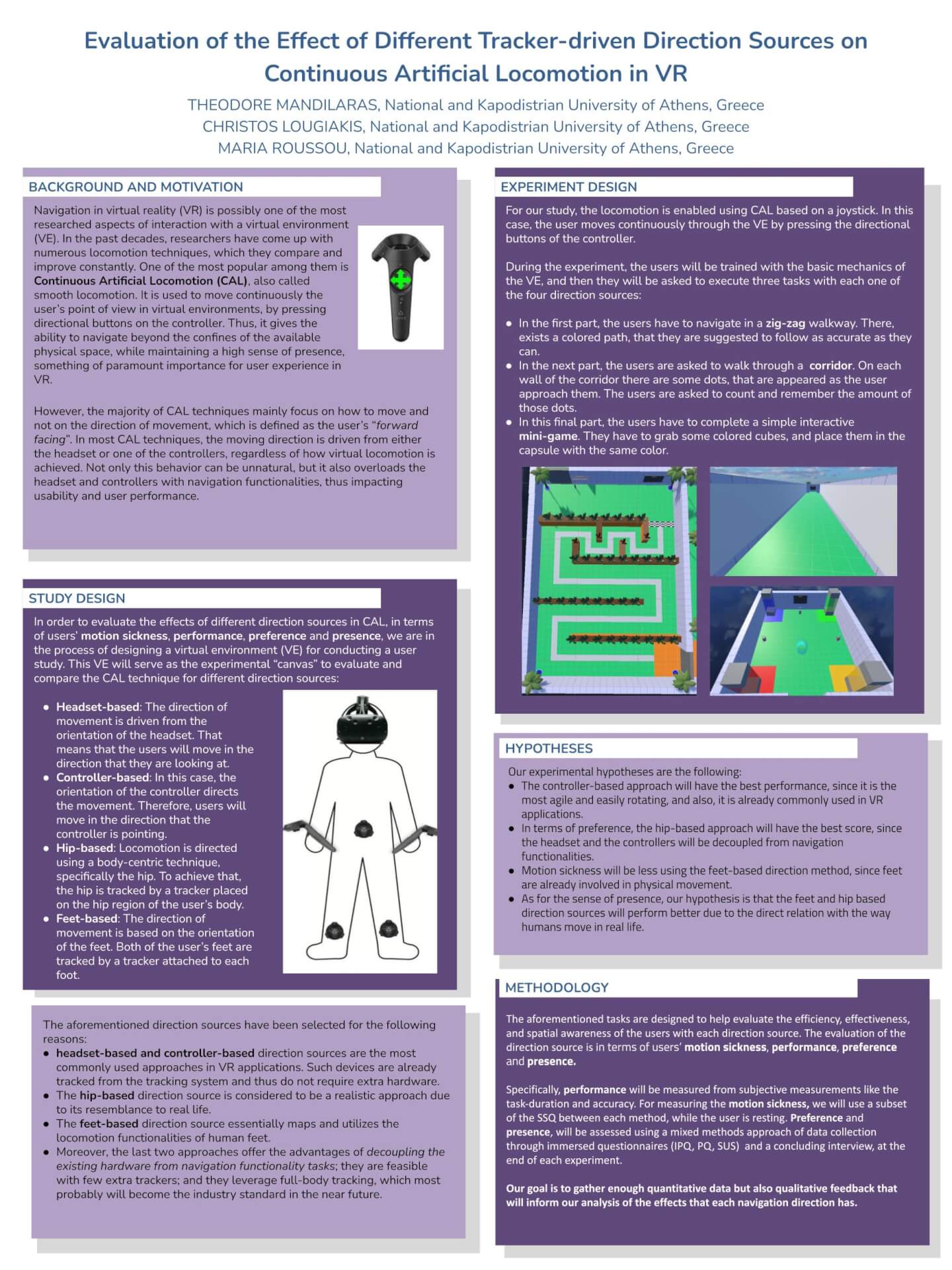Navigation in virtual reality (VR) is possibly one of the most researched aspects of interaction with a virtual environment (VE). One of the most popular locomotion techniques is continuous artificial locomotion (CAL), also called smooth locomotion. It is used to move the user’s point of view in virtual environments, giving them the ability to navigate beyond the confines of the available physical space, while maintaining a high sense of presence, something of paramount importance for user experience in VR. However, the majority of CAL techniques mainly focus on how to move and not on the direction of movement, which is defined as the user’s “forward facing”. In most CAL techniques, the moving direction is driven from either the headset or one of the controllers, regardless of how virtual locomotion is achieved. Not only this behavior can be unnatural, but it also overloads the headset and controllers with navigation functionalities, thus impacting usability and user performance. In order to evaluate the effects of different direction sources in CAL, in terms of users’ performance, preference, motion sickness and presence, we are in the process of designing a virtual environment (VE) for conducting a user study. This VE will serve as the experimental “canvas” to evaluate and compare the CAL technique for different direction sources.
Javascript must be enabled to continue!
Evaluation of the Effect of Different Tracker-driven Direction Sources on Continuous Artificial Locomotion in VR

CHI Greece
Connecting the Community
